Retail Marketing
15 Best Retail Store Marketing Strategies to Boost FootFall
Mon, 12 Jun 2023 05:55:56 GMT
Speak to our Hyperlocal Expert
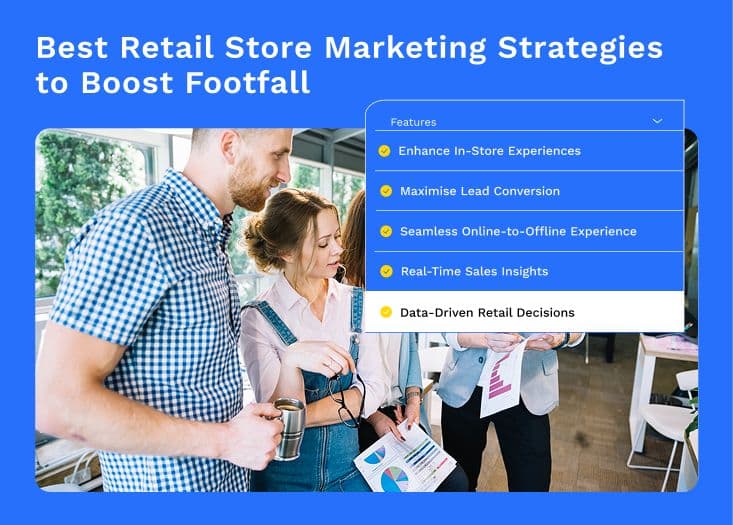
A retail store marketing strategy is a planned approach brands use to attract footfall, boost in-store engagement, and increase sales. It combines customer insights, local promotions, digital discovery, and data-driven campaigns to grow store performance.
Is your retail store doing enough to stay visible, attract foot traffic, and keep customers coming back?
In today’s competitive retail environment, where online shopping continues to grow, physical stores still hold strong over 70% of shoppers prefer visiting a store before making a purchase. This makes retail store marketing more critical than ever. A strong, localised marketing approach helps brands improve discoverability, create memorable in-store experiences, and build customer loyalty. From eye-catching window displays to community events and hyperlocal promotions, effective strategies can significantly boost visibility, footfall, and revenue for any brick-and-mortar business.
In this blog, we explore the importance, types, and top retail store marketing strategies that help brands win in 2025 and beyond.
What is a Retail Store Marketing Strategy?
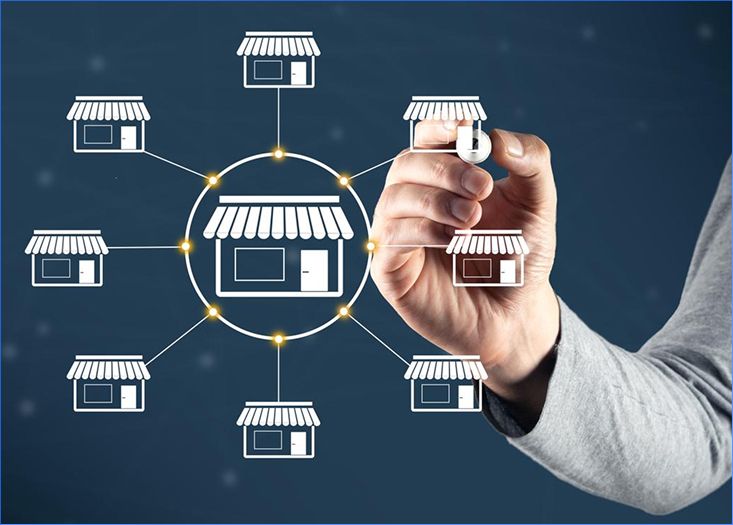
A retail store marketing strategy is a structured plan that helps brands attract more footfall, improve in-store engagement, and strengthen local visibility. It blends customer insights, digital discovery, and targeted promotions to drive sales across physical locations.
In simple terms, marketing for retail stores includes activities like advertising, pricing, merchandising, promotions, and customer relationship management that help retailers connect with the right audience. Modern retail store marketing strategies also rely on digital tools - such as Content Optimisation, Store Microsites, and Lead Management to enhance discoverability, personalise experiences, and stay competitive across both online and offline touchpoints.
Why a Retail Marketing Strategy Matters for Store Growth
A strong retail store marketing strategy is essential for helping brands stand out in today’s competitive landscape. It strengthens brand presence, builds long-term customer loyalty, and ensures your store stays visible to the right audience. Effective marketing for retail stores also helps businesses understand customer needs, deliver targeted promotions, and create smooth, memorable shopping experiences.
When retail store marketing strategies are planned well and supported by tools like Content Optimisation, customer insights, and data-driven execution they lead to higher engagement, increased footfall, and ultimately stronger sales and revenue growth.
Key Retail Marketing Types Every Store Should Know
1. Omnilocal Marketing
Omnilocal marketing targets customers nearby while maintaining a unified brand presence. With Store Locator and Listing Management, retailers can run hyperlocal campaigns, increase footfall, and improve Marketing for Retail Stores effectiveness.
2. Omnichannel Marketing
Omnichannel marketing connects online and offline channels to create a seamless shopping experience. From in-store displays to mobile apps and social media, it ensures consistent engagement. Tools like Content Optimisation and Unified Data Platform help drive effective Retail store marketing strategies.
3. Digital Marketing
Digital marketing uses websites, search engines, email, and paid ads to reach customers. Targeted campaigns, personalised promotions, and integrations with Store Microsites or CMS enhance marketing strategies for retail stores and measurable results.
4. Mobile Marketing
Mobile marketing engages shoppers via apps, SMS, push notifications, and location-based alerts. Using Data Activation or Hyperlocal Discovery Platforms, retailers can boost foot traffic and support Marketing for Retail Stores.
5. Social Media Marketing
Social media builds community, showcases products, and enables direct engagement. Integrating Review Management strengthens brand trust and enhances Retail store marketing strategies.
How the 6 P’s Shape Effective Retail Marketing Strategies
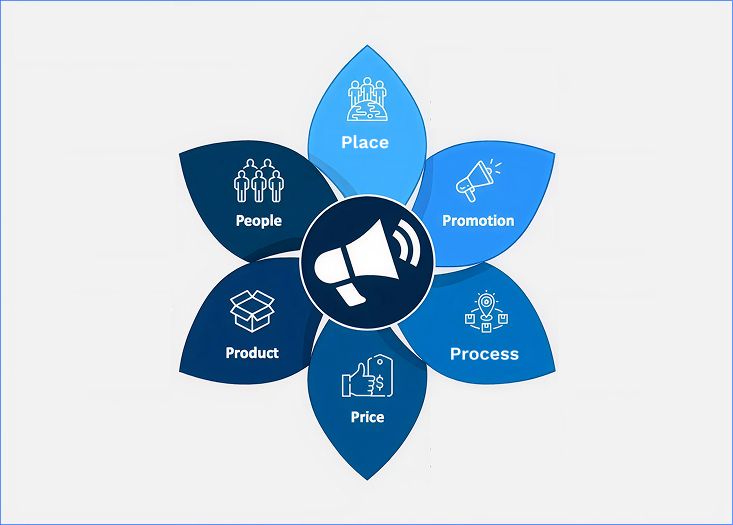
The 6 P’s of marketing, also known as the marketing mix, are key elements that retailers consider when developing their marketing strategies:
1. Product - Retailers need to offer a compelling range of products that meet customer needs and preferences. This includes product selection, quality, branding, packaging, and pricing.
2. Price - Determining the right pricing strategy is essential for retailers. Factors such as competition, target market, perceived value, and profit margins influence pricing decisions.
3. Place - Place refers to the distribution channels and locations where products are made available to customers. Retailers consider factors like store locations, online platforms, partnerships, and logistics to ensure convenient access for customers.
4. Promotion - Promotion involves communication and advertising efforts to create awareness and generate interest in products. It includes advertising, sales promotions, public relations, and other promotional activities to reach and engage target customers.
5. People - The people element focuses on the employees who interact with customers. Retailers train and empower their staff to deliver excellent customer service and build positive relationships with shoppers.
6. Process - The process aspect encompasses the procedures, systems, and workflows involved in delivering products and services to customers. Retailers strive to create efficient and seamless processes that enhance the customer experience and streamline operations.
By carefully considering and integrating these elements, retailers can develop comprehensive retail marketing strategies that drive customer engagement, satisfaction, and ultimately, business growth.
Top 15 Retail Store Marketing Strategies to Boost Footfall
1. Retail Store Marketing Strategy - Organic Discovery
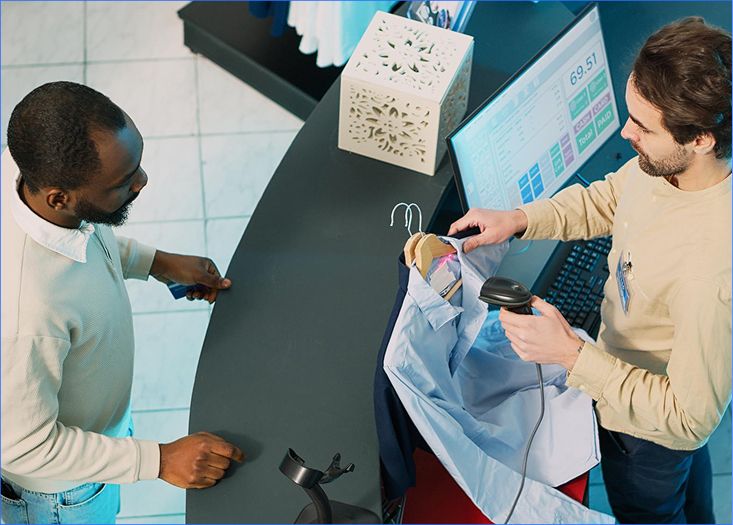
Organic discovery refers to the strategy of optimising a retailer's online presence to improve visibility in organic search results. This involves implementing search engine optimization (SEO) techniques, such as keyword optimization, content creation, and website structure enhancements, to attract organic traffic and increase brand exposure without relying solely on paid advertising.
2. Retail Store Marketing Strategy - Hyperlocal Marketing Campaigns
Hyperlocal marketing campaigns focus on targeting specific geographic areas or communities to drive engagement and sales. This strategy involves tailoring marketing messages and offers to the unique preferences and needs of local customers. By leveraging location-based targeting, local events, and partnerships, retailers can create personalised campaigns that resonate with the target audience in a specific locality.
3. Retail Store Marketing Strategy - GMB Listings Microsites
GMB (Google My Business) listings microsites for marketing for retail stores are individual web pages created within a retailer's Google My Business profile. These microsites provide additional information about a specific location or product/service offering for marketing strategies for retail stores. By optimising GMB listings with relevant keywords, images, and accurate information, retailers can improve their visibility in local search results and provide detailed information to potential customers, enhancing their marketing efforts for retail stores.
Learn how Google My Business listings and microsites can boost your store’s visibility in local searches. Discover practical tips to optimise your GMB profile, showcase your products, and attract more local customers effectively.
4. Retail Store Marketing Strategy - Lead Management

Lead management involves the process of capturing, tracking, and nurturing leads to convert them into customers. It includes activities such as lead generation, lead scoring, lead qualification, and lead nurturing through personalised communication and follow-up strategies. Effective lead management helps retailers identify potential customers, prioritise sales efforts, and improve conversion rates.
5. Retail Store Marketing Strategy - Store Locator
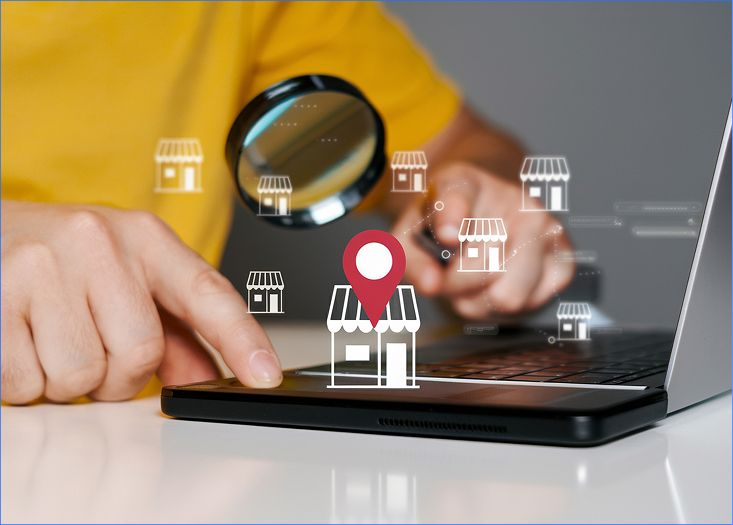
A store locator for marketing for retail stores is a tool or feature on a retailer's website or mobile app that helps customers find the nearest physical store location. By providing accurate location information, maps, and driving directions, retailers make it easier for customers to locate and visit their stores, enhancing their marketing for retail stores efforts. Bridgestone, for example, utilises a store locator feature to assist customers in finding their nearby tire and automotive service centres, improving their marketing strategies for retail stores.
Read Also - Top 10 Retail Store Locator Tools for B2B Brands in 2025
6. Retail Store Marketing Strategy - CEM Strategies
CEM (Customer Experience Management) strategies focus on delivering exceptional experiences to customers at every touchpoint. This involves understanding customer expectations, gathering feedback, and continuously improving the overall customer journey. By implementing CEM strategies, retailers can enhance customer satisfaction, build loyalty, and drive positive word-of-mouth.
7. Retail Store Marketing Strategy - D2C Trends
D2C (Direct-to-Consumer) trends refer to the growing trend of brands selling their products directly to consumers without intermediaries. This strategy allows retailers to establish a direct relationship with customers, gain valuable insights, and have greater control over pricing, branding, and customer experience. D2C trends often involve leveraging e-commerce platforms, personalised marketing, and data-driven strategies.
8. Retail Store Marketing Strategy - Local Business Growth
Local business growth in marketing for retail stores focuses on expanding a retailer's presence and market share within a specific geographic area through effective marketing strategies for retail stores. This strategy involves implementing targeted marketing campaigns that are tailored to the local audience, engaging with the community through events and initiatives, forming partnerships with local businesses to cross-promote products and services, and delivering exceptional customer service to foster customer loyalty and attract new customers to the retail store.
9. Retail Store Marketing Strategy - First Party Data
First-party data refers to customer information collected directly by a retailer from their interactions and transactions. This data includes customer demographics, purchase history, preferences, and behaviours. By leveraging first-party data, retailers can personalise marketing efforts, improve targeting, and deliver more relevant and engaging experiences to their customers.
10. Retail Store Marketing Strategy - Product Catalogue
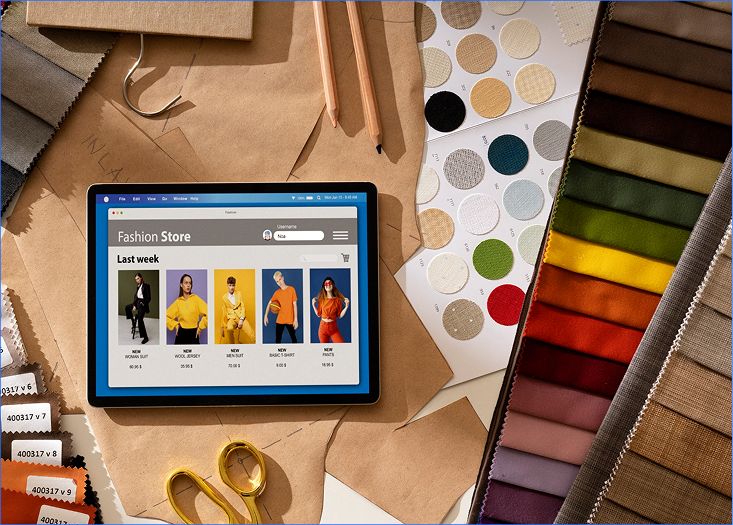
A product catalogue is a comprehensive listing or database of a retailer's available products. It provides detailed information about each product, including descriptions, specifications, pricing, and imagery. Retailers can utilise digital product catalogues to showcase their offerings, enable easy browsing and searching, and provide a seamless online shopping experience.
11. Retail Store Marketing Strategy - Digital Planogram
A digital planogram is a visual representation or layout of a retail store's product placement and arrangement. It helps retailers optimise product displays, shelves, and overall store layout to enhance customer experience, improve product visibility, and drive sales. Digital planograms can be created and managed using specialised software, allowing retailers to experiment with different layouts and analyse the impact on customer behaviour.
12. Retail Store Marketing Strategy - Call Tracking & IVR
Call tracking and IVR (Interactive Voice Response) are tools and strategies used by retailers to track and analyse incoming phone calls and automate customer interactions. Call tracking allows retailers to attribute phone calls to specific marketing campaigns, understand caller demographics, and measure the effectiveness of advertising efforts. IVR systems enable automated menu options and routing, allowing customers to self-serve and receive prompt assistance.
Read Also - How Smart IVR Boosts Dealer & Retail Store Efficiency
13. Retail Store Marketing Strategy - Access to First Party Data
Access to first-party data refers to the retailer's ability to utilise and leverage the customer data they have collected directly from their interactions. This includes customer profiles, purchase history, preferences, and behaviours. Having access to this data enables retailers to personalise marketing campaigns, tailor product recommendations, and improve customer segmentation and targeting.
14. Retail Store Marketing Strategy - Mobile Friendly Website
A mobile-friendly website is designed and optimised to provide an optimal browsing and shopping experience on mobile devices. With the increasing use of smartphones for online activities, retailers must ensure that their website is responsive, loads quickly, and offers a seamless mobile experience. A mobile-friendly website improves user engagement, reduces bounce rates, and increases conversion rates.
15. Retail Store Marketing Strategy - Invest in Retail Optimised Platform
Investing in a retail-optimised platform, such as Sekel Tech's platform, provides retailers with a comprehensive solution that incorporates various digital marketing strategies and tools. Sekel Tech's platform offers features like SEO optimization, hyperlocal marketing capabilities, GMB listings microsites, lead management tools, store locators, CEM strategies, D2C trends integration, first-party data management, product catalogue management, digital planograms, call tracking, and IVR integration. By utilising Sekel Tech's platform, retailers can streamline their digital marketing efforts, enhance customer experiences, and drive business growth through a single, integrated solution.
These retail store marketing strategies help your store attract more footfall, boost engagement, and drive growth. Combining offline and digital tactics with tools like Sekel Tech can streamline efforts and maximize results.
Explore the top 15 retail marketing strategies that can help your store attract more foot traffic, engage customers, and boost sales. Perfect for brands looking to elevate in-store performance.
How to Implement Marketing Strategies for Retail Stores to Boost Traffic
Implementing marketing strategies for retail stores effectively requires a structured approach that blends both offline and digital efforts. Start by understanding your target audience and their shopping behaviour, then design campaigns that align with their preferences. Continuously monitor performance with analytics to refine your approach and ensure maximum impact.
Leverage Sekel’s tools such as Content Optimisation, Lead Management, and Store Microsites to tailor messaging, highlight key products, and create engaging customer experiences. By integrating retail store marketing strategies across multiple channels - including social media, local promotions, and in-store initiatives - brands can enhance visibility, attract more footfall, and drive meaningful traffic that converts into sales.
Explore how to build a strong retail brand that connects with customers, increases loyalty, and ensures sustainable growth. A must-watch for retailers planning long-term success.
Emerging Trends in Retail Store Marketing Strategies
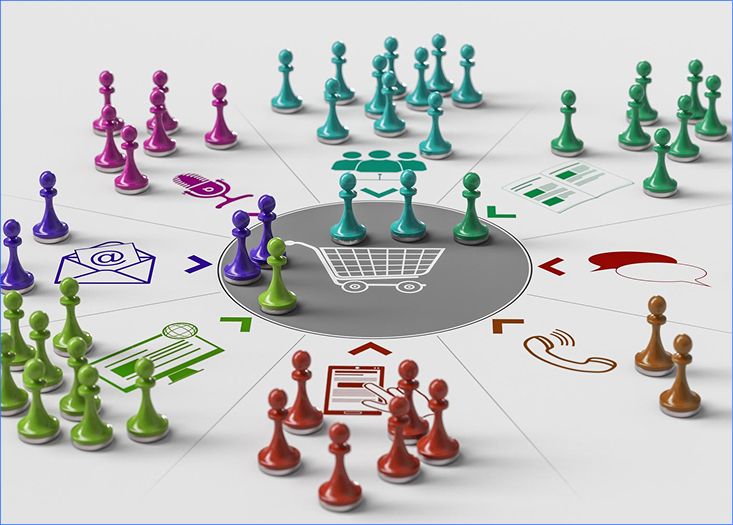
Retail marketing is rapidly evolving with new technologies, changing customer expectations, and smarter data tools shaping how stores connect with shoppers. Here are key trends driving marketing strategies for retail stores in 2025:
1. Smooth Omnichannel Experience
Shoppers expect seamless experiences across online and offline channels. Retailers are combining physical stores with digital touchpoints, like online catalogs, click‑and‑collect, and in-store digital displays. Tools like Sekel’s Unified Data Platform and Store Microsites help manage real-time inventory and customer interactions for a smooth omnichannel experience.
2. Hyper-Personalisation & AI Engagement
Retailers use AI and first-party data to deliver tailored recommendations, offers, and personalised in-store or online experiences. Features like Content Optimisation and Data Activation help refine retail store marketing strategies, improving engagement, conversions, and loyalty.
3. Experiential Retail
Stores are becoming experience hubs, offering pop-ups, interactive displays, AR/VR try-ons, and events to engage customers emotionally. Experiential retail increases dwell time and strengthens brand connection, boosting the effectiveness of marketing for retail stores.
4. Sustainability & Value-Driven Branding
Consumers prefer brands with clear values. Highlighting eco-friendly practices, ethical sourcing, and transparent operations can differentiate a brand. Integrating sustainability into retail store marketing strategies builds trust and attracts conscious shoppers.
5. Data-Driven Local Marketing
Hyperlocal campaigns using geo-targeted ads, store locators, and local listings are gaining importance. Sekel’s Listing Management, Store Locator, and Customer Data Platform allow retailers to deliver precise, location-based marketing and drive local footfall effectively.
Read the Economic Times article to explore how tech-driven innovations are reshaping retail strategies and enhancing customer experiences in stores, online, and across omnichannel platforms.
Frequently Asked Questions (FAQs)
1. How Can Retail Store Marketing Strategies Drive Business Growth?
These strategies can help attract customers, build brand loyalty, and increase sales. By implementing effective strategies such as product catalogue management, digital planograms, call tracking, and IVR integration, retailers can enhance customer experiences, optimise store layouts, and improve customer service, leading to business growth.
2. Can Retail Store Marketing Strategies Be Implemented Digitally?
Yes, these strategies can be implemented digitally. Techniques such as SEO optimization, online advertising, social media marketing, and digital catalogue management enable retailers to reach a wider audience and drive online and offline sales.
3. Are Retail Store Marketing Strategies Suitable for All Types of Retail Businesses?
Yes, these strategies can be customised and adapted to suit various types of retail businesses, including small boutiques, department stores, specialty shops, and large retail chains. The strategies can be tailored to fit the unique goals, target audience, and market presence of each business.
4. How to market your retail store?
Market your retail store by combining Marketing for Retail Stores strategies like local promotions, engaging in-store experiences, social media campaigns, and digital discovery. Use tools like Store Microsites and Lead Management to boost visibility, attract footfall, and drive sales.
5. What is the 3-3-3 rule in marketing?
The 3‑3‑3 rule is a simple marketing framework that helps brands stay focused and effective. It means:
- Pick 3 key messages you want customers to remember
- Target 3 main audience segments who matter most to your business
- Use 3 primary marketing channels to deliver your message consistently
This approach avoids spreading your efforts too thin and ensures your communication stays clear, memorable, and impactful, especially useful for small or growing businesses.
Conclusion
A strong retail store marketing strategy drives footfall, boosts sales, and builds lasting customer loyalty. Combining in-store tactics with digital tools like Sekel’s Content Optimisation, Store Microsites, and Lead Management helps retailers engage customers and enhance brand visibility. By implementing marketing strategies for retail stores across multiple channels, businesses can stay competitive, deliver memorable shopping experiences, and achieve sustainable growth. Start leveraging these strategies to turn visitors into loyal customers and elevate your store’s performance.
Take Advantage of Sekel Tech’s Retail Store Marketing Strategies
Take advantage of Sekel Tech's comprehensive retail store marketing strategies. With our powerful dashboard, we offer a complete solution that implements all of the mentioned strategies. From organic discovery to hyperlocal marketing campaigns, GMB listings microsites to lead management, store locator functionality, CEM strategies, integration of D2C trends, local business growth tactics, access to first-party data, product catalogue management, digital planograms, call tracking, IVR integration, and more - our platform covers it all. Elevate your retail marketing efforts with Sekel Tech's advanced tools and features, and drive your business growth to new heights.
Read More Blogs -
1. 25 Retail Store Marketing Ideas to Reach Target Audience
2. 15 Best Retail Store Marketing Agencies or Companies in 2025
Share
Similar Blogs
Loved this content?
Sign up for our newsletter and get the latest tips & updates directly in your inbox.
There’s more where that came from!